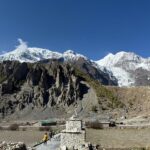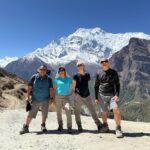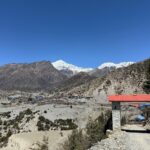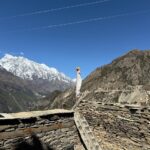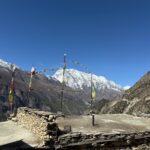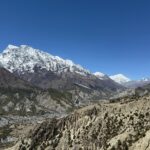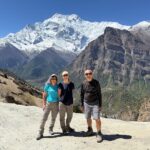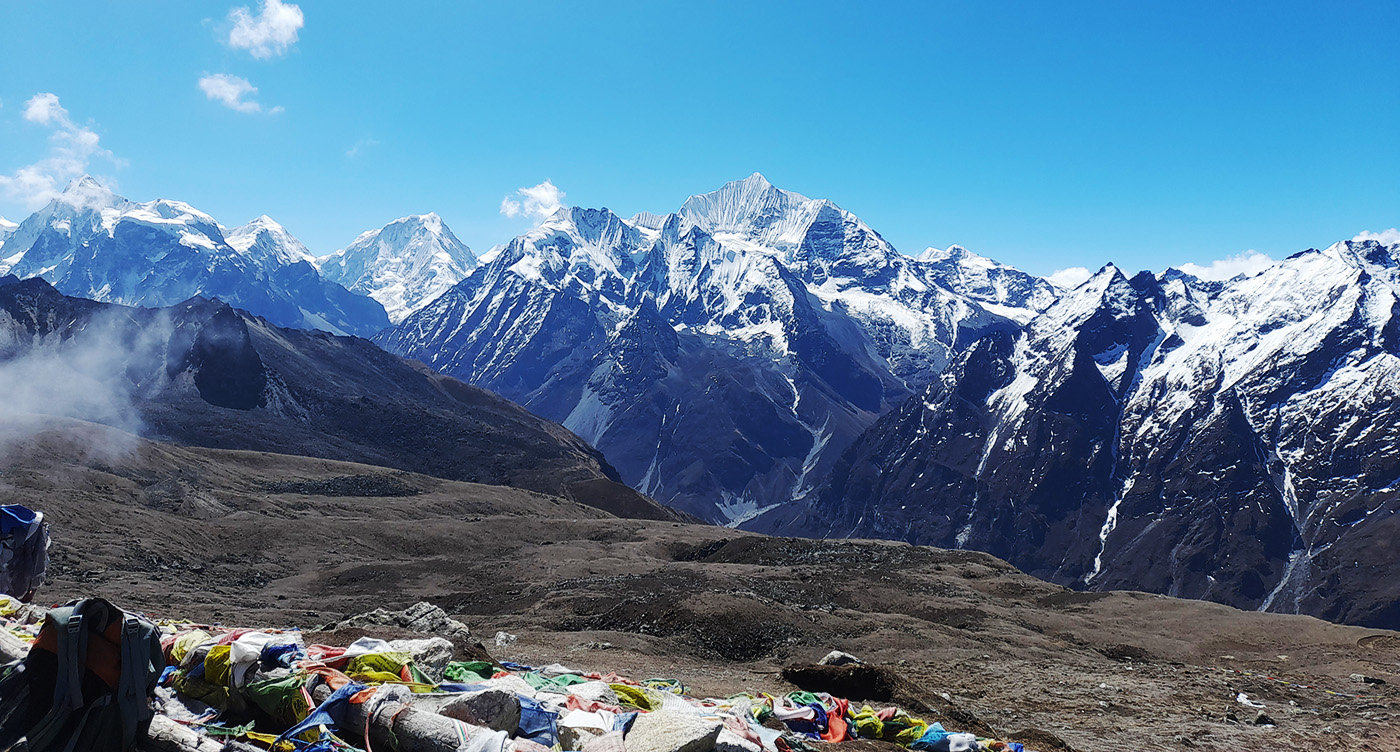
Langtang Valley Trek Difficulty
The difficulty level of the Langtang Valley Trek combines many challenges. This makes it suitable for both beginners and experienced hikers. The difficulty of the trek is caused by factors such as altitude, terrain and different weather conditions. At Kyanjin Gompa, altitude sickness can be a problem at altitudes up to 3,830 m, especially for those who Hike to Tserko Ri at 4,984 m. The terrain offers groomed trails, rock climbing and occasional snow conditions. For good physical fitness and endurance it became necessary Weather conditions may vary. With unexpected rain or snow affecting the route. Overall, Langtang Valley Trek helps to prepare properly by understanding the difficulty level and guarantees a memorable trekking experience.
Overview of the Langtang Valley Trek
Located near Kathmandu Valley, Langtang Valley Trek is one of the emerging trekking routes in Nepal. It is known for its accessibility and stunning nature – and for its warm welcome to its people.
This trek is approximately 70 kilometers long and usually takes 8 to 10 days. It rewards trekkers with panoramic views of Himalayan giants such as Langtang Lirung, Langtang II, Kyanjin Ri, Yala Peak, Tserko Ri, etc. in between. On the way you will encounter glaciers, which add to the charm of the trek… . This trip is a perfect blend of stunning natural beauty with rich cultural experiences. This makes it a highly recommended route for beginners.
From Syabrubesi, the gateway to Langtang, to Kyanjin Gompa, one of the spiritual havens of the Nepal Himalayas. Adventurous hikers can venture further afield to climb Tserko Ri.
Langtang Valley Trek Difficulty Breakdown
The difficulty of trekking in Langtang Valley varies depending on many factors. Although experienced hikers with a good level of fitness may find this relatively easy. But beginners may find it a strenuous challenge. Let’s explore the main elements that affect the difficulty of a hike and test your limits.
The difficulty of trekking in Langtang Valley varies depending on many factors. Although experienced hikers with a good level of fitness may find this relatively easy. But beginners may find it a strenuous challenge. Let’s explore the main elements that affect the difficulty of a hike and test your limits.
- Altitude
Langtang Valley Trek offers flexibility in terms of altitude. It allows you to customize the peak according to your comfort. The highest point of the trek is generally Kyanjin Gompa at 3,830 meters. For those wanting more of a challenge, You can extend your trip for another day and climb the 4,984 meter peak Tserko Ri, turning your trek into an alpine adventure. - Distance and terrain
Trekking in Langtang Valley takes approximately 70 kilometers in 8 to 10 days. The number of trekking days may vary depending on your pace and trail conditions. Expect to hike 4 to 6 hours per day on a variety of terrain. Including well-groomed trails, rocky trails, switchbacks and the occasional gravel. Carrying a backpack over such long distances can be challenging for beginners. It especially tests endurance and often causes sore muscles. The route includes forest trails, rock climbing and snow-covered sections. Especially if you climb Tserko Ri. Parts of the hike include steep climbs and knee-jerk descents. This may require moderate to vigorous effort. Proper preparation for these challenges including physical exertion Long walks each day sore muscles and challenging terrain considered important Especially for first time hikers. - Weather and climate
The same is true of most trekking routes in Nepal. Weather conditions for trekking in Langtang Valley are unpredictable. Although not as intense as on other plateaus, the best hiking season is spring. (March to May) and Autumn The season is mild (September to November) and is clear, providing ideal conditions for hiking. The monsoon season (June to August) brings heavy rain. It makes the road slippery and infested with leeches. Increases the risk of slipping and injury. Landslides and road blockages are possible during this time. In winter, hikers must prepare for extremely cold weather. Although this route is generally passable. But there are additional attractions with snowy landscapes. It is important to research the best time to trek in Nepal before choosing your season. The same is true for packing a bag to suit the specific conditions of your hike. - Past experience
Your previous trekking experience has a great influence on the difficulty of Langtang Valley trekking. Although this route is suitable for beginners, But it can also bring challenges. Previous hiking experience is not required, though. But doing so will make the hike much easier. This allows you to quickly adapt to your physical demands. and immerse yourself in local culture. In general, experienced hikers are often familiar with the challenges of high altitude. Daily long hikes Packing your luggage efficiently and the overall rigors of long-distance hiking. But beginners should prepare well in terms of research. Physical fitness Awareness of the route and overall endurance to deal with physical and mental challenges. - Accommodation/ management
Langtang Valley Trek has teahouses, lodges and cozy homestays. that provides a deeper connection to the local community Expect basic amenities depending on your location. Stops like Bamboo and Lama Hotel have shared facilities, while Langtang Village and Kyanjin Gompa are a few better guesthouse options… On offer, some rooms have en suite bathrooms and hot showers.
Preparing for the Langtang Valley Trek
Understanding the challenges of trekking in Langtang Valley is only half the battle. With adequate preparation these problems will go away. And your adventure will be safe and memorable.
Physical preparation and training
Your physical fitness plays a key role in determining how much fun your hike will be. This will ensure a pleasant hiking experience. Start exercising at least three months before your trip. Focus on a comprehensive exercise routine. This includes strength training. Cardio training Stretching and other basic exercises, cardio exercises such as running, swimming, and cycling are important for strengthening the heart and lungs. This is important in dealing with the limited oxygen available while hiking. strength training Targets shoulder, back, core, leg and calf muscles. Walking long distances with a backpack Challenging ascent Come down and be prepared.
Regular hiking in particular will help you strengthen your body for hiking. Climbing the stairs in a tall building can also mimic the physical demands of hiking. Gradually increase the intensity of the exercise to build endurance.
Smart packing
Properly packing your gear can have a huge impact on your hiking experience. A smart packing strategy ensures you have all your essentials without overloading your backpack. Use a reliable guide or pack list designed for high-altitude trekking, such as the Langtang Valley Trek, and adjust according to the hiking season.
Things you need include several layers of fabric, including an insulating inner layer. Warm middle layer and soft outer layer A change of clothing is a good option. Additionally, prepare sturdy hiking boots, a first aid kit, necessary medicines, waterproof outer layers, gaiters, and a reliable sleeping bag. And if you want your luggage to be lightweight there is also the option of renting some equipment.
Health and Safety Precautions
Your enthusiasm for hiking should be paired with awareness and caution. Do a thorough medical examination to identify any hidden health problems before setting out for Langtang Valley. If necessary, carry appropriate medicine to manage your health conditions while trekking in extreme conditions.
Study of severe mountain climbing illnesses Take measures to prevent altitude sickness, such as proper ventilation, hydration, and a balanced diet. Climb slowly and steadily and carry the necessary medications. And prepare nutritious snacks to keep energy levels up.
It’s important to get comprehensive travel insurance before hiking to avoid logistical, safety, or financial issues. Finally, it’s best to hike with an experienced guide who knows your tank emergency route and can help in challenging situations.
Mindset and Pacing
Mental toughness is just as important. with body preparation A strong attitude helps you deal with your hiking challenges more effectively. Engage in mindfulness practices such as yoga, meditation, and breathing exercises to build a positive attitude and mental flexibility.
Imagine going on a hike and setting realistic daily goals. And keep in mind how much of a hike that kind of thing is. Bring a board game, cards, or a book with you to keep your mind occupied during your free time. To help manage both the physical and mental demands of hiking.
In summary, a trip to Langtang Valley is a mix of adventure. Cultural immersion and stunning natural beauty With proper preparation recognizing the challenge and positive attitude You can conquer this trek and create memories that will last a lifetime.

